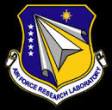AFRL posts new RFI for Mastering Complexity in MDC2
 On December 20, the Air Force Research Laboratory posted a new request for information for Mastering Complexity in Multi Domain Command & Control (MDC2) (RFI-AFRL-RIK-18-02). Abstracts are due by February 15, 2018.
On December 20, the Air Force Research Laboratory posted a new request for information for Mastering Complexity in Multi Domain Command & Control (MDC2) (RFI-AFRL-RIK-18-02). Abstracts are due by February 15, 2018.
The Air Force Research Laboratory, Information Directorate (AFRL/RI) is seeking information to better understand existing vendor offerings and the landscape of research and development (R&D) that could drive possible technical studies as they pertain to mastering the complexity of Multi Domain Command and Control (MDC2).
The Air Force (AF) is investigating the breadth of technologies required to enable a future Multi Domain Command and Control (MDC2) capability. AFRL/RI is interested in those technologies that can help it master complexity while executing Multi Domain Operations across Air, Space, and Cyber within three main technical areas; Complex Adaptive Systems, Complex Effects Analysis, and Machine Intelligence. This RFI is requesting information to better understand existing vendor offerings and the landscape of research and development (R&D) towards Multi-Domain Command and Control (MDC2).
Technical Challenge: In any Command and Control (C2) system/environment there are three universally held parameters that must be dealt with in order to achieve any success in the environment:
1. Mitigate uncertainty in spite of the environment set by the adversary
2. Increase operational tempo to get inside the adversary’s control loop
3. No increase in manpower to mitigate the uncertainty and increase the ops tempoWe can view a C2 system as a function of the uncertainty, tempo, and manpower:
C2 = f(uncertainty, tempo, manpower) w.r.t an operating domain.
The ability to effectively command & control within a domain is dictated by the complexity of the operating domain. This complexity drives all three parameters, where complexity determines operational uncertainty, tempo, and dictates overall manpower requirements. Traditionally, C2 has been considered only for a singular domain, where the complexity has to date been manageable through existing C2 systems & processes. As the AF moves towards Multi-domain operations, this complexity becomes multiplicative, where each of the singular domains: Air, Space, Cyber, brings with it new operating dimensions in the form of rule-sets, resources, tempo, capabilities, and uncertainties that all must be accounted for, reasoned over, and integrated together in order to achieve a true multi-domain C2 capability.
It is this complexity that the AF seeks to master. The ability to manage the complexity of C2 systems so that it does not slow AF operations, but rather speeds up operational tempo, and the ability of the AF to use this complexity as a weapon against adversaries to slow their operational tempo, degrade their effectiveness, and overwhelm their C2 functions becomes key.
The mastering of complexity to allow AF freedom of movement, while at the same time using complexity to restrict the movement of an adversary, assumes that the human in the loop is capable of keeping pace or getting ahead of this complexity. Going forward this complexity will exceed human capacity and will require the detailed reasoning found in machine-level processing. It is for this reason that an investment in machine intelligence is required to enable the human user to master this complexity at speeds greater than the adversary.
There exists a natural tension between these two end goals, on the one hand C2 systems must be sufficiently complex as to enable the development, control, and execution of complex effects, including the integration of multiple systems-of-systems, functions, and people. On the other hand, it should not be so complex that it impedes or nullifies the very impact of such effects on the adversary. Therefore, successful solutions are those where the complexity of the MDC2 system is less than that of the MDC2 effects that are deployed. Achieving this balance will ensure that the AF is able to outpace and overwhelm the adversary at a tempo and effectiveness that is less then what is required to plan, execute, and assess those effects. While this provides a general construct for measuring success, it will be critical to establish such measures of C2 complexity in order to guide and benchmark MDC2 technology solutions and capabilities.
Full information is available here.
Source: FedBizOpps








